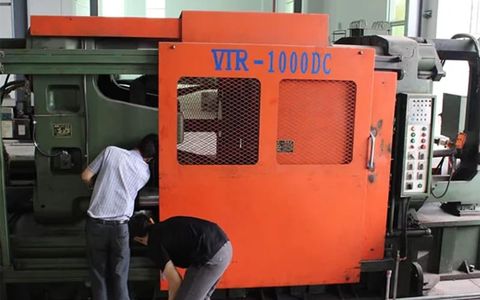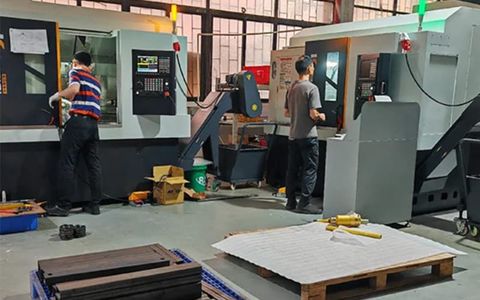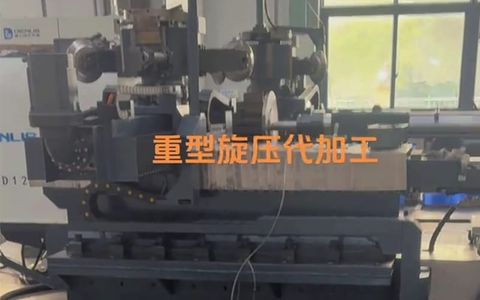Versatile Metal Spinning Technique
Versatile Metal Spinning Technique
Using a lathe and pressure, metal can be moulded into the desired shape through a technique called metal spinning.
Versatile Metal Spinning Technique
Using a lathe and pressure, metal can be moulded into the desired shape through a technique called metal spinning. This method can be applied to make a wide range of objects that serve various purposes, such as functional parts like lighting fixtures and industrial components, as well as aesthetic pieces like vases and bowls.
Throughout this article, we’ll give you a complete overview of metal spinning. We’ll cover the history of the technique, the materials and tools required, the process itself, as well as its different applications. Additionally, we’ll provide some tips to help you achieve success in your metal spinning projects.
Metal spinning is an ancient craft that can be traced back to the early civilizations of Egypt, China, and India. The technique was utilized to fashion a diverse range of objects, from ornamental vessels to functional tools and weaponry.
During the Middle Ages, the evolution of metal spinning technology revolved around the ability to perpetually rotate materials. The archaic bow, which was previously utilized to rotate the lathe, was eventually superseded by a pedal that liberated the craftsman’s hands and facilitated more precise speed control. These lathes were often depicted as petite desk-shaped workstations for machining projects and were more compact than earlier models. The advent of the Industrial Revolution during the 18th and 19th centuries led to the transformation of metal spinning into a contemporary manufacturing process, with the introduction of novel materials and tools. In the present day,this technique finds application in a broad spectrum of industries, ranging from aerospace and automotive to consumer goods.
Materials Used in Metal Spinning
There are variety of materials used for this technique, including:
- Aluminium
- Brass
- Copper
- Stainless steel
- Mild steel
- Titanium
- Zinc
The choice of material depends on the desired application, as well as the cost and availability of the material.
Tools Used in Metal Spinning
The tools used in this technique include:
Lathe: a machine used to rotate the metal workpiece.
Mandrel: a tool used to support the metal workpiece during the process.
Chucks: devices used to hold the metal workpiece in place on the lathe.
Rollers: tools used to apply pressure to the metal workpiece during the process.
Cut-off tools: tools used to cut and shape the metal workpiece during the finishing process.
The Metal Spinning Process
In metal spinning there are three primary processes, namely: Conventional Spinning, Flow Forming and Shear Spinning. The distinctive features of each method are identified by how they affect the materials’ deformation, the placement of the surface roller and blank, whether spinning is done with or without a mandrel, and the temperature of the blank.
Conventional Spinning
Conventional spinning is the most common method of metal spinning. It involves clamping a flat metal disc onto a lathe and spinning it at high speeds while applying pressure with a handheld tool called a spoon. The spoon is used to gradually push the metal towards the lathe’s centre, forming it into the desired shape. This process is repeated until the desired shape is achieved. Conventional spinning is used to produce a wide variety of shapes, from simple bowls to complex geometric shapes.
Flow Forming
Flow forming, also known as tube spinning, is a process that is used to produce cylindrical or tubular shapes. In this process, a metal blank is clamped onto a lathe and spun at high speeds. A mandrel is then inserted into the centre of the blank, and pressure is applied to the metal using rollers. As the mandrel spins, the rollers apply pressure to the metal, gradually forming it around the mandrel into a cylindrical or tubular shape. Flow forming is commonly used to produce components such as rocket, missile, pressure vessel and automotive components, such as car and truck wheels.
Shear Spinning
Shear spinning is a process that involves cutting and bending a metal blank into a desired shape. In this process, a metal disc is clamped onto a lathe and a tool called a shear is used to cut the metal along a predetermined line. The cut section of the metal is then bent to the desired shape using a handheld tool. This process is repeated until the desired shape is achieved. Shear spinning is commonly used to produce parts such as cones, domes, and other complex shapes that cannot be produced using conventional spinning.


 English
English
 Deutsch
Deutsch
 العربيّة
العربيّة



